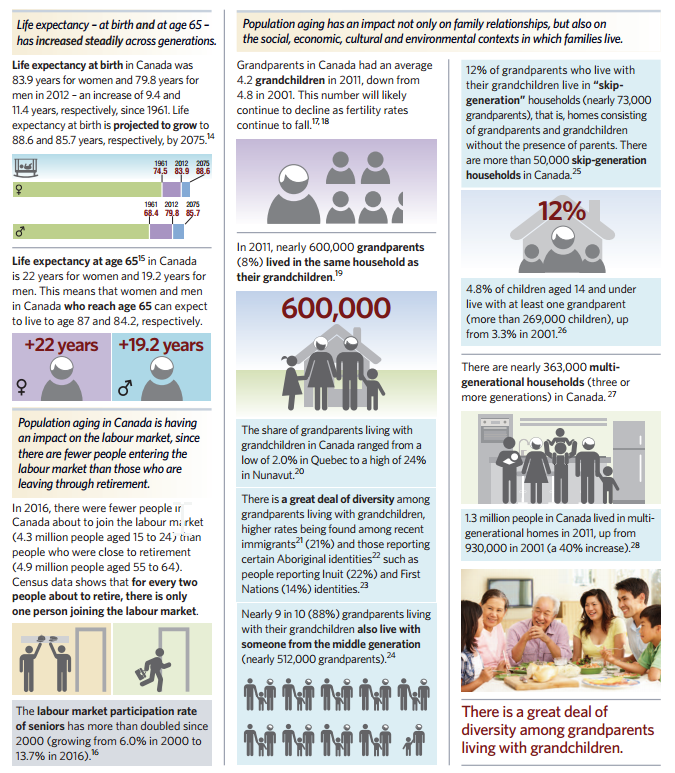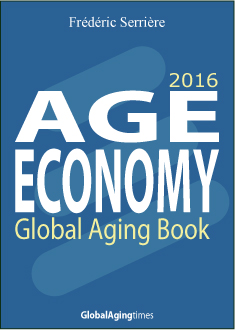Canada’s population is aging rapidly, with a higher share of seniors than ever before. While this can present some societal challenges, it also provides growing opportunities for intergenerational relationships, since younger people have a greater likelihood of having more seniors and elders in their lives. Population aging has an impact not only on family relationships, but also on the social, economic, cultural and environmental contexts in which families live.
Using new statistics from the 2016 Census, A Snapshot of Population Aging and Intergenerational Relationships in Canada explores the evolving demographic landscape across the country through a family lens. As the data shows, Canadians are getting older, and “seniorhood” is a growing life stage – a time when many of our parents, grandparents and great-grandparents are continuing to play important roles in our families, workplaces and communities.
Highlights include:
- There are more seniors than ever before in Canada. More than 5.9 million people in Canada are aged 65 and older – up 20% since 2011 and now outnumbering children (5.8 million).
- Nunavut is the youngest region in Canada. Children account for one-third (33%) of the population in Nunavut.
- We’re more likely to become seniors than in the past. In 2012, nine in 10 Canadians were expected to reach age 65, up from six in 10 in 1925.
- The number of multi-generational households is growing. In 2011, 1.3 million people in Canada lived in multi-generational homes, up 40% since 2001.
- Working seniors are on the rise. The labour market participation rate of seniors more than doubled since 2000, from 6.0% to 14% in 2016.
- Canada’s aging population affects family finances. An estimated $750 billion is expected to be transferred to Canadians aged 50 to 75 over the next decade.



